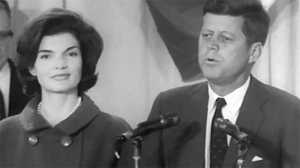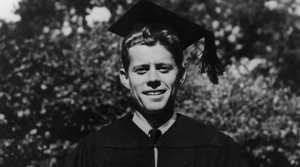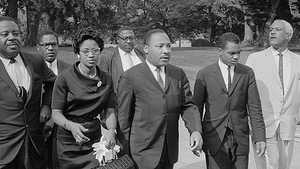Politics on Television

Democratic presidential candidate John F. Kennedy and his Republican rival Richard M. Nixon met on September 26, 1960 in a debate that changed the course of American politics. Vice President Nixon defended the Eisenhower administration against charges that its domestic programs had failed. Kennedy denied Nixon's assertions that he lacked the necessary experience. But it was not the content of the debate that made it a political milestone. It was the medium by which most Americans experienced the debate -- television.
Before the debate began, public opinion polls showed a close race between the two men. But the television cameras changed that. An estimated 75 million viewers, at the time the largest television audience ever, saw a contrast between Nixon and Kennedy that had nothing to do with political positions. Nixon, who was recovering from a recent illness, appeared haggard and pale. He wore a five o'clock shadow and perspired profusely. His makeup ran under the hot studio lights. Kennedy looked fit, relaxed and handsome. He exuded confidence and poise.
The power of these televised images revealed itself in post-debate polls. Many radio listeners gave the edge to Nixon. Television viewers, however, overwhelmingly agreed that Kennedy had won. By their next debate, Nixon had solved his appearance problems, but the damage was done. Kennedy had strengthened his bond to a medium which would significantly influence the course of his presidency.
On inauguration day, January 20, 1961, President Kennedy proclaimed to a national television audience that Americans would "pay any price, bear any burden, meet any hardship, support any friend, oppose any foe, to assure the survival and success of liberty." His gravity, his determination, and his charismatic good looks transmitted an air of competence and trustworthiness to viewers across the nation. Kennedy had only defeated Nixon by a slender margin, but television was on his side. He looked like a hero and sounded like a hero. His approval ratings rose.
A skillful media manipulator, the new president used television to present a carefully constructed public image to Americans. Kennedy's constituents saw him as vigorous, healthy, a dedicated husband, a giant among men. That he was none of these things did not matter. Americans viewed televised images of domestic harmony and regal splendor, and they believed what they saw.
Television showed Kennedy in moments of bliss and of glory. It showed him in moments of danger and uncertainty as well. When U.S. reconnaissance flights discovered Soviet missile-launching facilities on Cuban soil, Kennedy faced the greatest challenge of his presidency. On the evening of October 22, 1962, he delivered a televised address to explain the situation and announce his response to the Soviets -- a naval blockade of Cuba.
Never before had so many Americans seen their president at such a dangerous moment. If Kennedy took pains to show resolve, he knew that not only Americans, but his Soviet adversaries, were watching. Within days, the Russians backed down. By declaring his ultimatum over the airwaves, Kennedy had shown the power of television as a diplomatic weapon. But this power, Kennedy soon learned, was double-edged. The camera could highlight not just his strengths, but his weaknesses as well.
On May 3, 1963, television network news programs brought images of horrifying racial violence into living rooms across America. Viewers watched as blacks protesting segregation in Birmingham, Alabama, were viciously attacked with clubs, dogs, and high-pressure fire hoses by Birmingham police. The extent of America's racial problems had at last gone irrefutably public, and Kennedy, who had shown lukewarm support for civil rights legislation, was forced into action. The next month, he announced a comprehensive package of civil rights legislation in a nationally televised address.
If Kennedy is remembered as a friend to blacks, it is not because of the civil rights legislation that passed during his administration -- none did. But in living rooms across America, the president of the United States had looked his fellow citizens in the eye and told them that black Americans deserved equal treatment under the law. Not just the president's words, but the immediacy and reach of television, made his civil rights address one of the most powerful in U.S. history.

Some five months after his civil rights speech, John Kennedy was assassinated in Dallas, Texas. Within minutes, television news anchors revealed the tragedy to the nation. The networks broadcast images of grief, pain, and violence -- Jacqueline Kennedy leaving the hospital with her husband's body. Assassin Lee Harvey Oswald being murdered by Jack Ruby. A horse-drawn carriage rolling slowly down Pennsylvania avenue, carrying the president to his grave. John F. Kennedy, Jr.'s final salute.
The Kennedy presidency ended as it had begun -- on the television screens of America. In the days and weeks after the president's death, broadcast images helped complete his transformation into an American icon. And as a nation grieved its fallen leader, the institution of the television presidency lived on.







